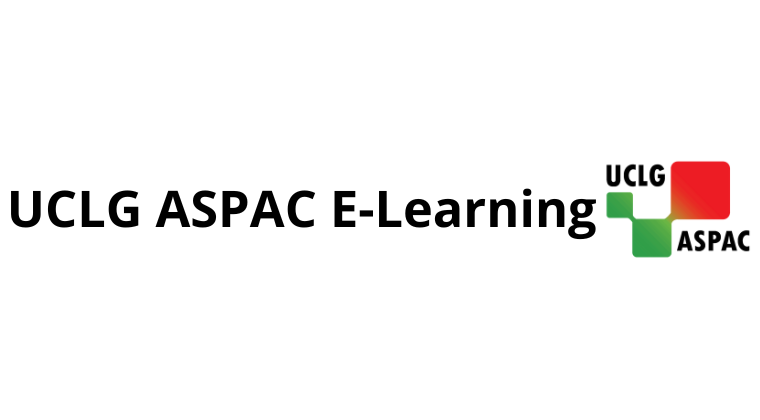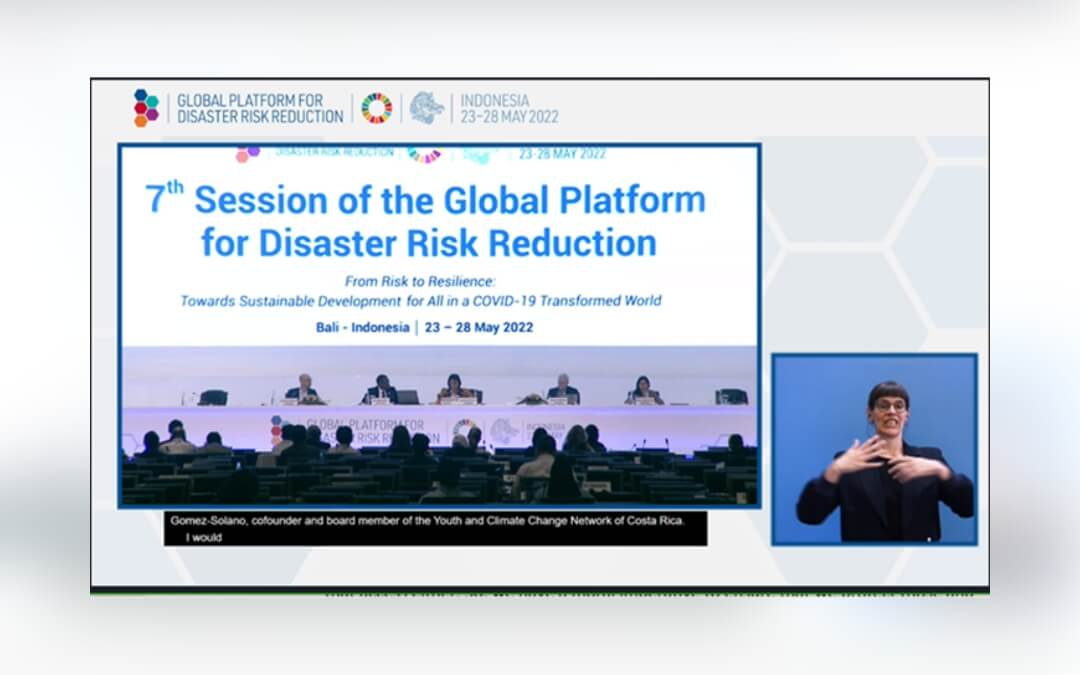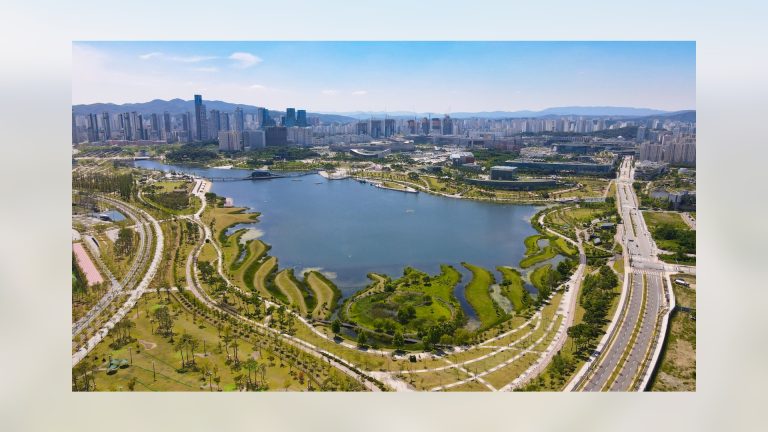The COP26 held last November has produced a pessimistic outcome, namely hope for the achievement of sustainable development and overall resilience. This shows howreal action planning is needed. Moreover, the increasing impact of the climate emergency that almost violates the 1.5 C bar limit indicates that there is a need to improve on Disaster Risk Reduction (DRR) and build resilience. In other words, climate action and disaster risk management are inseparable and should be embedded in the larger domain of governance that is preventive, adaptive, anticipatory, absorptive and transformative. Planning and investments need to be risk-informed, to avoid creating new risk and maladaptation.
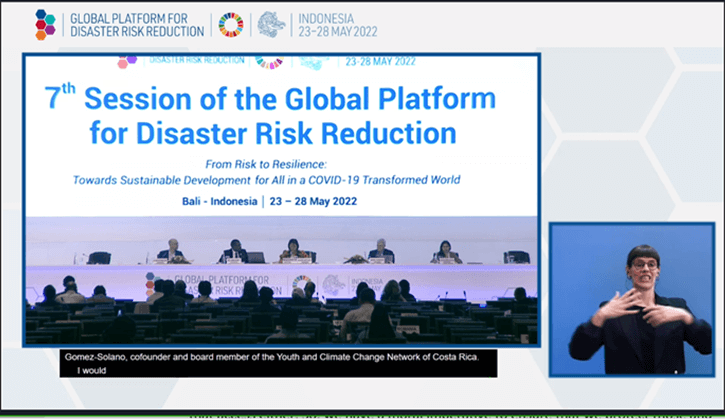
The Global Platform for Disaster Risk Reduction or GP2022, is also held following the decisions and results of COP 26, which asprovided the global community with a unique opportunity to strengthen Disaster Risk Reduction and build resilience. With the theme “Strengthening Disaster and Climate Risk Governance at National and Local Levels for Accelerated Progress on SDGs”, the high-level dialogue will showcase how integrated climate and disaster risk governance can be achieved by overcoming persistent challenges and building on successful examples. It will consider specific steps of how to ‘build back better’ in the years to come and in the remaining period of the Sendai Framework for Disaster Risk Reduction. This dialogue was moderated by Andini Effendi (Independent Journalist). Here are the key takeaways from this high-level dialogue:
This first speaker of this dialogue was from Mr. Selwin Hart (Special Adviser to the UN Secretary-General on Climate Action & Assistant Secretary-General for the Climate Action Team, Executive Office of the Secretary-General, United Nations). He opened his presentation by reflecting on some of the positive takeaways of COP26 “6 months ago we left COP26, Glasgow with a sense of optimism, namely hopes”, he said.However,of course, this is not enough upon reflecting on current situations in the development agenda. Despite all the big rooms for improvement, we need to collectively continue and turn the positive sentiment into an actionable climate plan. There is aneed to pursue reducing emissions, protecting people and safeguarding livelihoods with the same degrees of urgency and ambitions.
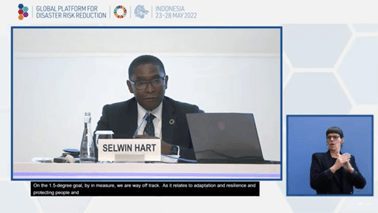
During the presentation, he mentioned the most startling finding in the IPCC report is that current levels of global warming in the context of locations such as Central or South America, South Asia or a small island developing state. In the report, said regionsare 15 times more likely to die from climate impacts whereas countries in those regions contribute the least to climate change. In addition to that, those regions mentioned, and other developing countriesare part of the global hotspot; where 1/3 persons do nothave access to an early warning system. Also, in Africa, 6/10 persons do not have that access either. This is why the United Nations Secretary General has ensured that adaptation and resilience are on track in protecting the people and the planet based on these situations.
In line with that, there is an initiative to provide a 100% early warning coverage to every single person living on this planet over the next 5 years. Besides that, there is also an economic imperative, which is investing in adaptation early as it will simultaneously safeguard livelihoods. Still, all of these efforts would not be fully operational and effective with little to no support from various parties. Therefore, he requested all of us to collaborate and partner on these projects. COP27 will be held in only the next 7 months, but with all goodwill we can make a significant impact.
The second speaker of this dialogue was Mr. Mark Howden asDirector, Australian National University, Institute for Climate, Energy and Disaster Solutions. He mentioned that this time we have multiple climate events happening at the same time. In fact, he also mentioned a recent study, which conveyedhow children born today will experience 2-3 times more climate extremes more than their grandparents ever did. They will pay for the cleanup so there must be quick, concrete actions to reduce those risks. Furthermore, climate change has increased the amount of compound and concurrent events, such as food systems collapse because of climate disruption, climate change and its impacts pushing down production of food.
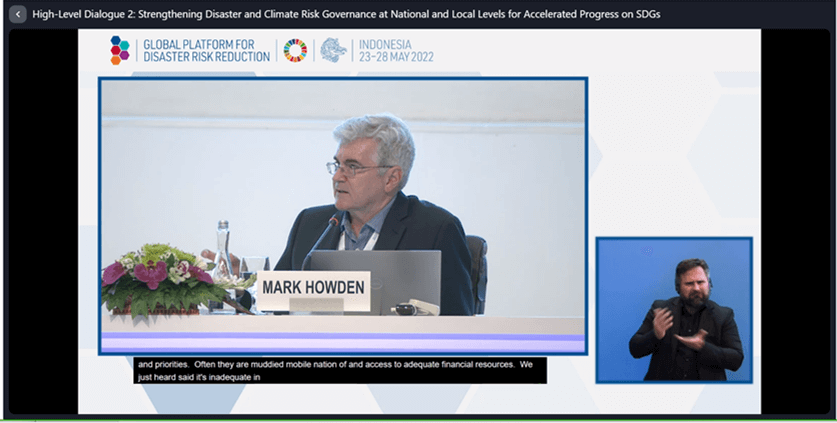
He also mentioned how all of these issues are systemic problems. Therefore, we need systemic solutions from a science perspective in combating all of these issues. However, this willrequire a clear understanding of climate risks and how they will evolve in the future, exploring and opening pathways to adaptation (opening up for newer options). Besides that, we also need to build enabling conditions to sustain implementation of good climate action, which is political commitment and follow-through. After that, we need better Monitoring and Evaluation (M&E) mechanisms, involve the opinions and participation of youth, involve local communities who are equipped with the localised knowledge about how climate change is specifically affecting their surroundings. We also need to link adaptation response to emissions response in the context of SDGs. That is what IPCC calls Sustainable Climate Development. In line with this, risk typology understanding and better decisions political commitment will increase the likelihood of receiving and making better in getting climate response.
With all the GP2022’s topic, the IPCC is looking for: 1) Compound: this refers to multiple related-events occurring at the same time e.g. heatwaves, droughts, and fires. 2) Cascading: this refers to when one climate disruption triggers another disruption e.g. the fire in Australia took out electricity systems, hence banking systems and people cannot withdraw money. Since electricity systems and banking systems are out, people cannot buy petrol. 3) Aggregate: this refers to the separate and independent-related risks e.g. climate change create cyclones and storms, resulting in the need of moreshelter because their homes are flooded and/or destroyed. In the context of COVID-19, this gets even more challenging because in shelters, people will crowd together within a limited space.
As a result, the IPCC hoped that these results can decrease the range of options and effectiveness of adaptation options that has been the result of increasing climate change. Therefore, reducing emissions is still one of the most relevant solutions to slow climate change as that will impact our ability to adapt to climate risks and the efforts of building resilience.
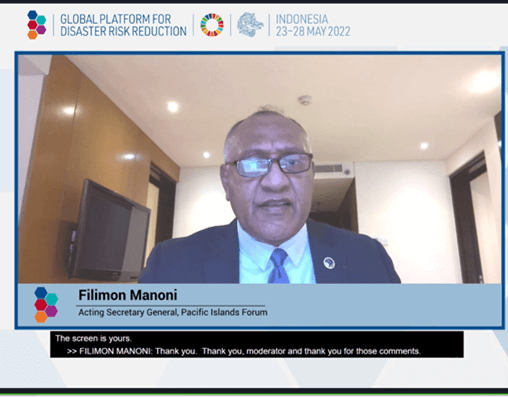
The next speaker was talked about the experience of integrated climate and adaptation. Mr. Flimon Manoni (Deputy Secretary General, Pacific Islands Forum secretariat) mentioned how for small island countries, capacity is a challenge. He said that their country has passed more than ten years of integrated climate change. Here are the actions that have been taken: 1) focused on the main challenge, which is in the institutional coordination arrangement. 2) The leaders have endorsed the establishment and are working together with the United Nations Secretary General. 3) Coordinated with the various resilience building bodies. He also mentioned that access to robust and contextualised data making is also crucial. As a result, he hoped that COP27 will finally be able to provide some good and real progress on these obligations that remain unfulfilled by the polluting countries and institutions. They are also looking for partners on the global stage to work.
Moving to the next speaker, which talked about the key steps that Germany has taken in developing systems of climate change adaptation. This topic was presented by Mr. Jochen Steinhilber as Director General for Displacement, Crisis Prevention and Civil Society, Federal Ministry for Economic Cooperation and Development, Germany.
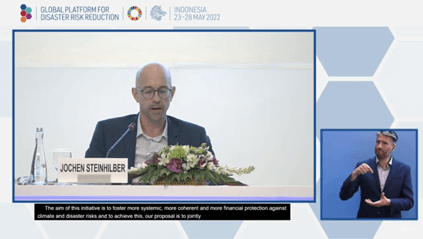
He mentioned that Germany is among the largest donors to international climate financing and aims at balancing mitigation and adapting to climate change and therefore disaster risk management. Germany is also working at supporting global partnerships in the global initiative on disaster risk management.Aims of this initiative is to mobilisemore systematic , coherent and more financial protection against climate and disaster risk. Besides that, Germany also feels the need to make friends, therefore they are actively working with others to improve access to finance. He also mentioned the 3 core elements in climate adaptation which are: 1) strengthen the global coordination structure. 2) global flexible and collaborative financing structure which will channel financial and technical support to those country. 3) building on principle affordability sustainability.
For better impact of climate adaptation, he recommended us to strive towards more alignment and take matters closely at hand. He also called everyone to mandate our system and continue to deal with unprecedented options. We have to mandate them and be ready with the results of the next COP27.
Still, all forms ofclimate actions are not fully effective without youth contribution, as emphasised by Ms. Natalia Gomez Solano (President, Costa Rican Youth and Climate Change Network). For example, climate change has increased the frequency and the extension of hydrometeorological events or what we would call climate-induced disasters. Therefore,disaster risk reduction or DRR also has a multi-hazard approach related to climate change. To reduce vulnerability, loss and damage, build resilience and protect vulnerable communities, it is important that we do not separate these two concepts. There are also various efforts to reduce the gap between the two, but there are challenges as well: one of them is the communication of both terms, this influences lack of understanding in communities and young people. She also mentioned that the youth and children are also considered as main stakeholders. “We need to have good connections with offering the stakeholders and the organisations.”, she said.
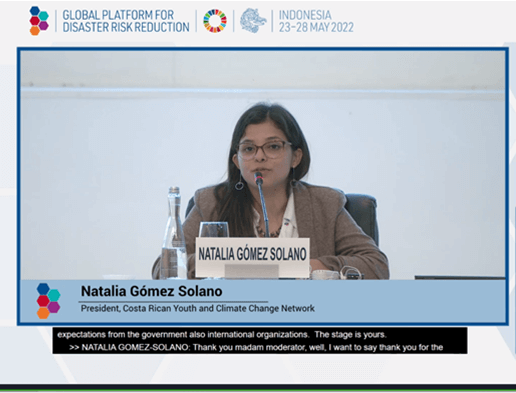
Currently in the context of Costa Rica’s youth they are building proposals for funding options, and sharing knowledge and higher educational levels amongthe youth group. They have a strong commitment to encourage youth to be involved in building strengthened spaces and networks where young people can share best practices in climate action. In addition to that, they also active in reminding the Costa Rica national and local government that the youth and children are the future in continuing good climate actions, therefore voices of the youth must be heard.
That ‘s all the key messages from the speakers. We need to be better prepared in managing disaster risk reduction. We need to cooperate with various parties. Also, we need to ensure that no one is left behind and able to contribute to prevention from now on. Concrete and tangible actions in the long term is a must!
By KM Team



